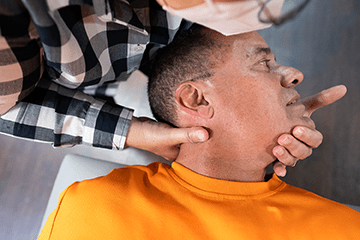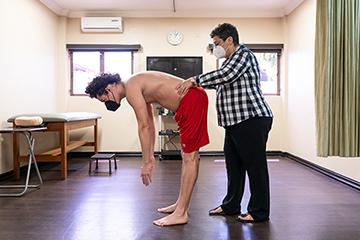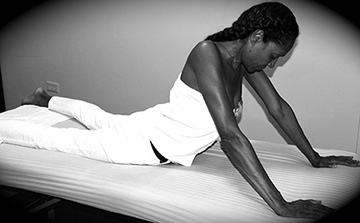Spinal & Scoliosis
Recurrent back and neck pain can affect every aspect of your life and deciding which treatment is best for you can be frustrating and confusing. Rest assured you are not alone in your struggle – 80% of us will experience back pain severe enough to miss work in our lifetime. At Healing Partners, we can help you sort through your conservative treatment options.
Our therapists are experienced in treating spinal dysfunction and will develop a program to help you manage your symptoms, restore normal mobility and prevent recurrence.
Common Conditions We Treat

Neck & Lower Back Pain
Physical therapy for neck pain typically includes the following goals:
- Improve neck range of movement
- Reduce pain and stiffness
- Develop endurance strength in neck muscles
- Improve posture and develop strategies to prevent pain recurrence.
Even if pain cannot be eliminated, physical therapy may play an important role in improving neck posture and function for daily movements.

Neck and Back Pain Conditions
- Spondylosis (Arthritis of the spine)
- Spinal Fusion
- Stenosis (Narrowing of the spine)
- Herniated Disc (Slipped Disc)
- Facet Joint Pain
- Sciatica (pain running down the back of the leg)
- Sacro-Iliac Dysfunction
- Piriformis Syndrome
- Spondylolisthesis (Spinal Instability)
- Scoliosis
- Whiplash
- TMJ Dysfunction (Condition affecting the jaw)
- Migraine Headaches

Postural Realignment
The physical therapists at Healing Partners recognize that the structures of the human body are functionally connected and take a whole-body approach to assessing posture. The therapists look at the position of the pelvis, which can also involve looking at the feet, knees, pelvic bones and spine. They also work their way up to the shoulders, neck and head making sure that all of the joints are in good alignment to help with optimal positioning for attenuating forces and distributing weight. People who have to sit at the computer for most of the day frequently present with their head sitting farther forward from their body than it should be, causing a loss of the cervical lordosis, or curve of the neck, shoulders turned in and an increased thoracic kyphosis (hunching over position which can create a dowager’s hump.
Over time, poor posture can promote a myriad of problems, so it is vital to identify postural deficits and address them.


